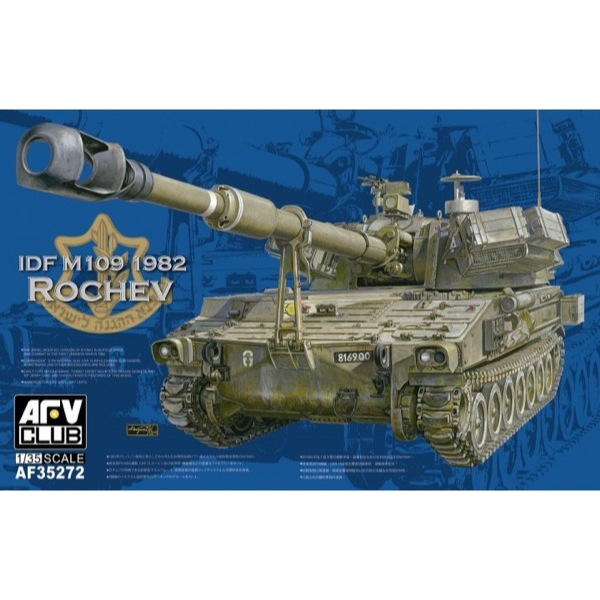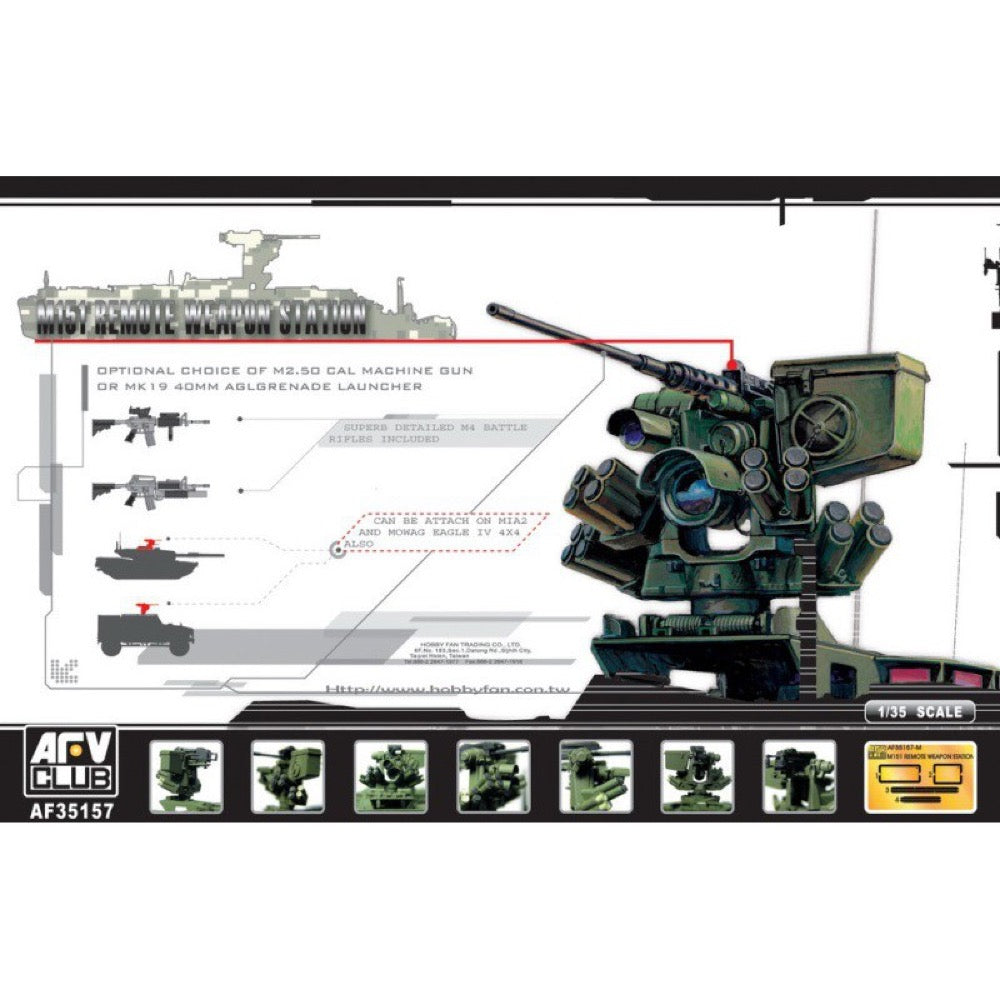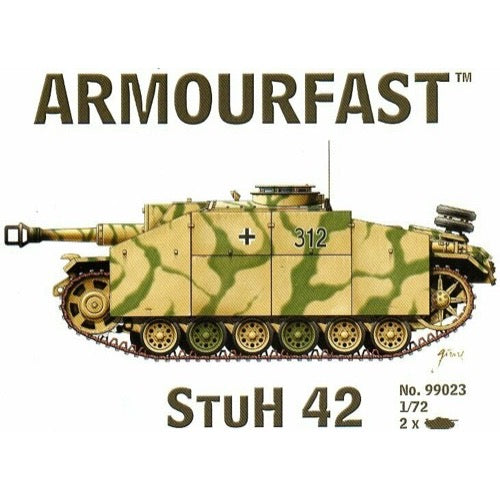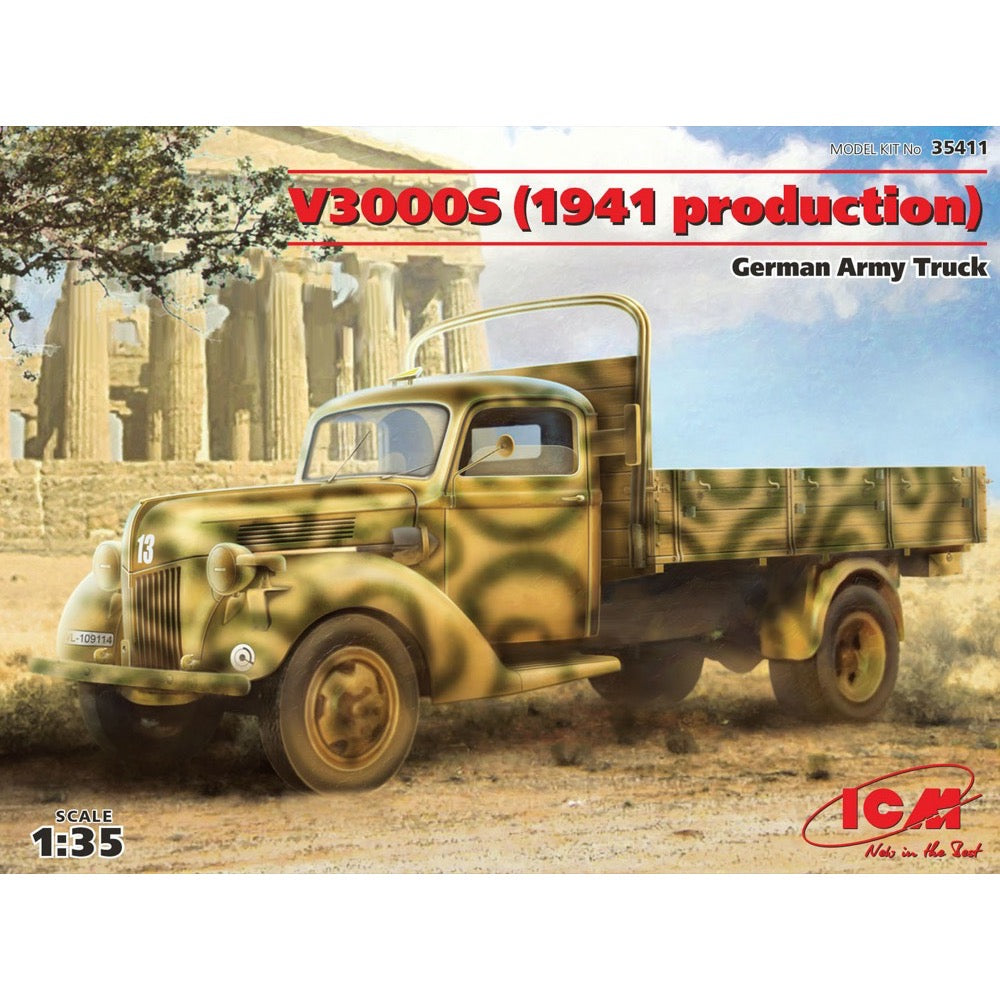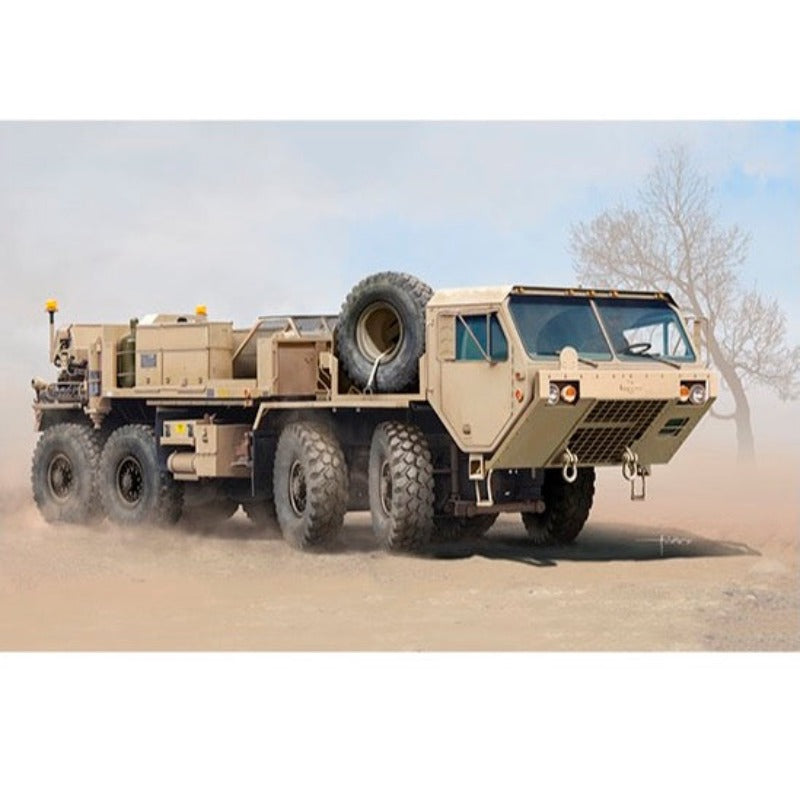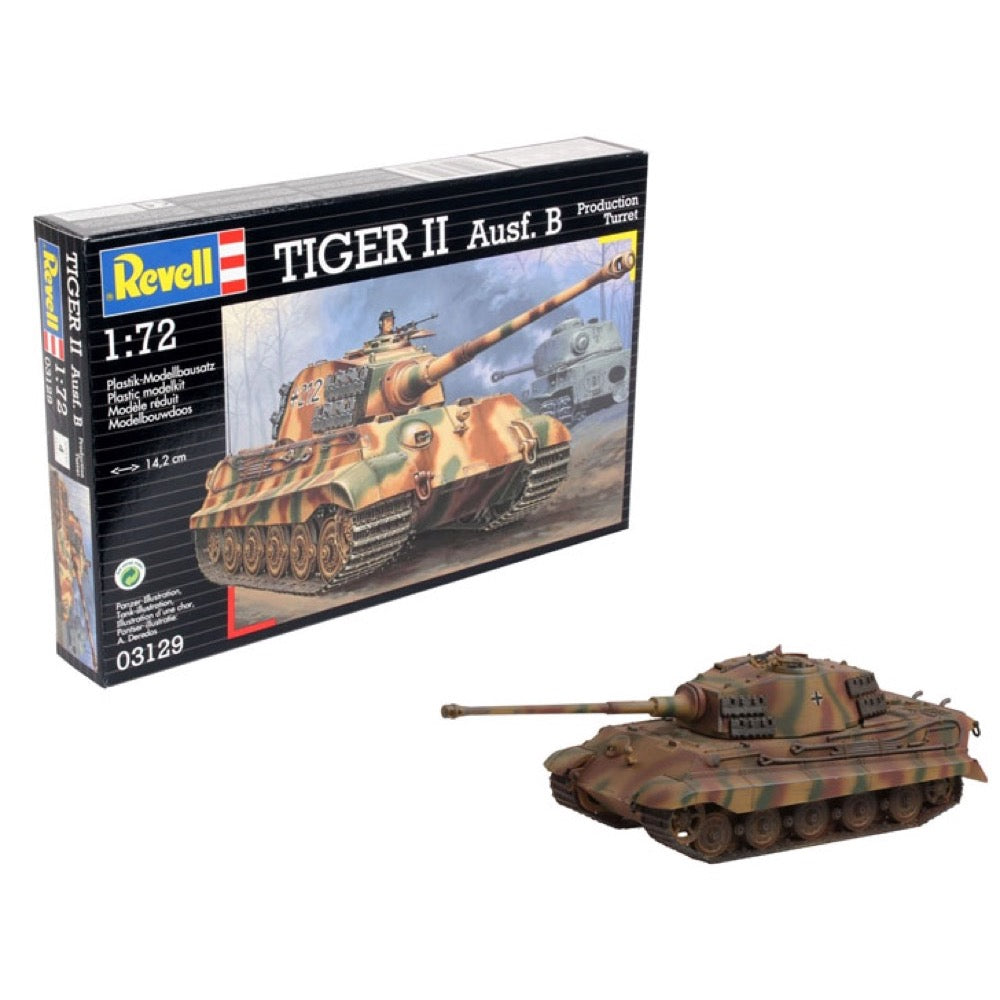
Revell 03129 1/72 German Tiger II AUSF. B
17.00
$
<p>Developed in 1943, the Tiger II, also known unofficially as the Königstiger, went into series production at Henschel in 1944. The Königstiger combined the requirements for armor protection and firepower in an outstanding manner. The front armor, up to 150 mm thick, could not be penetrated by shells from the on-board guns of enemy main battle tanks. The hull sides were armored up to 80 mm thick. Despite several massive Allied bombing raids on the Henschel plant in Kassel, a total of 492 Tiger IIs - including prototypes and 50 vehicles equipped with Porsche turrets - were delivered to the troops. However, not all of these reached the frontline units. A large number of the Tiger IIs were lost due to drive problems resulting from the high total weight or simply from lack of fuel.</p>
<h3>Features</h3>
<ul>
<li>New mold with fine surface details</li>
<li>rotating turret with height-adjustable gun</li>
<li>injection molded track</li>
<li>turret hatches can be shown open</li>
<li>Zimmerit (anti-mine coating) not included</li>
</ul>
<p><strong>Authentic representation of the following versions:</strong></p>
<ul>
<li>Schw. PzAbteilung 503 Hungary/Eastern Front, Oct. 1944</li>
<li>Schw. PzAbteilung 506 Western Front, March 1945</li>
</ul>
<h3>Includes<br>
</h3>
<ul>
<li>Kit incl. building instructions and decal</li>
</ul>
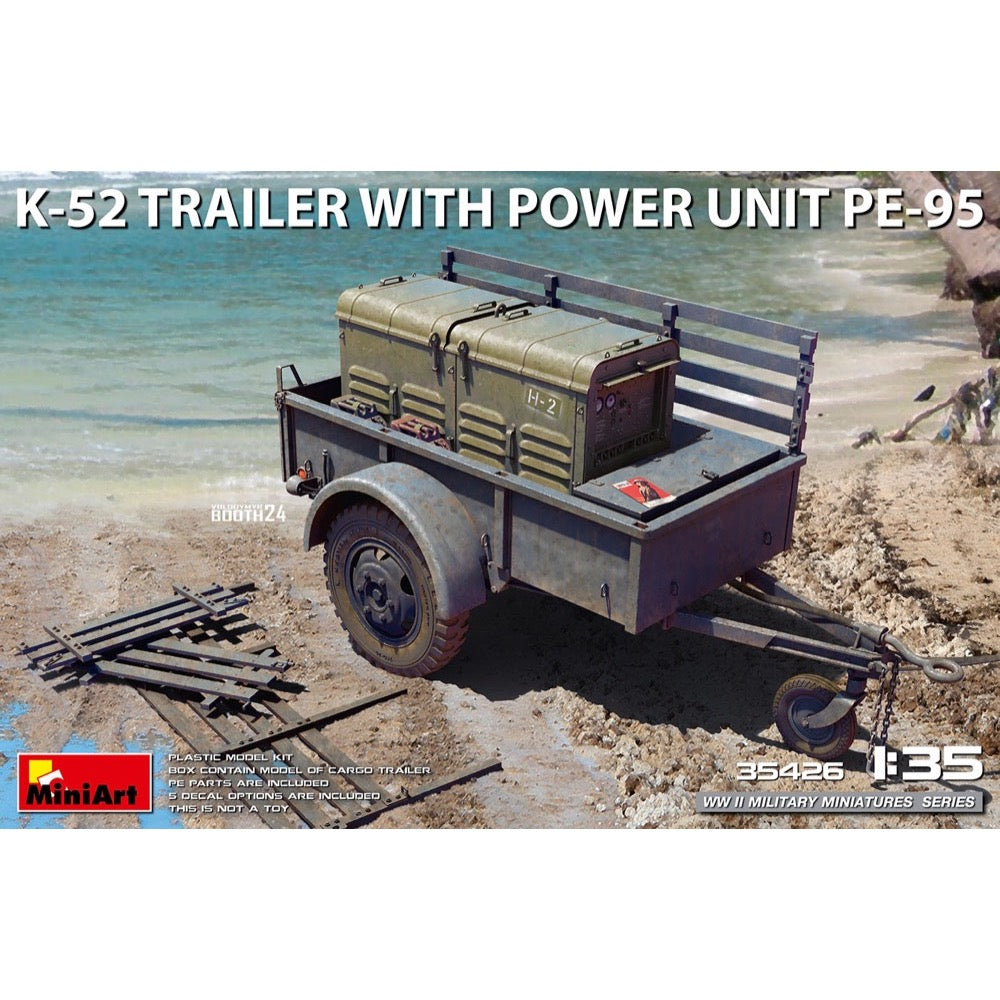
MiniArt 35426 1/35 K-52 Trailer with Power Unit PE-95
16.00
$
<p>The upcoming MiniArt Kit 35426 features the K-52 Trailer with Power Unit PE-95 in a 1:35 scale.</p>
<p>This highly detailed plastic model kit captures the authentic look of the K-52 trailer, complete with the PE-95 power unit, used extensively during World War II.</p>
<h3>Includes</h3>
<ul>
<li>Trailer and Power Unit: Detailed design of the K-52 trailer and PE-95 power unit.</li>
<li>High-Quality Plastic Parts: Precision-molded components for a realistic build.</li>
<li>Photo-Etched Parts Included: Adds fine detailing for an accurate representation.</li>
<li>5 Decal Options: Customize your model with authentic markings.</li>
</ul>
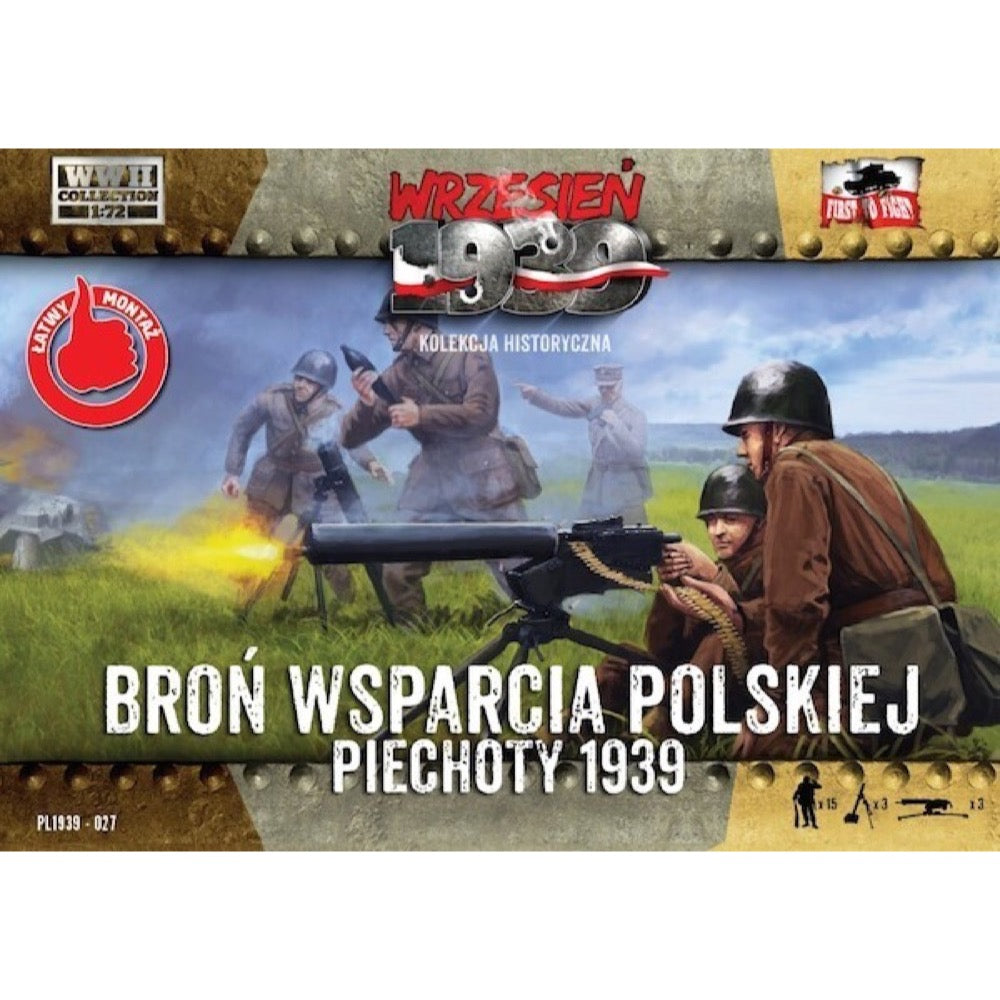
First to Fight 027 1/72 Polish Infantry Support Weapons
8.00
$
<p>Based on the experiences of World War I, but also on the experiences of the Polish-Bolshevik war of 1919-1921, the command of the Polish army appreciated the role of machine weapons in the interwar period, but budget shortages made it difficult to saturate Polish infantry with machine weapons in on the eve of the September campaign. As a result, just before 1939, the Polish infantry division had 320 manual machine guns (km for short), 34 light km and 124 heavy km. These numbers were clearly lower than those of the German infantry division, where, together with submachine guns, there were - full time - 857 machine guns! It is worth noting that the Polish infantry platoon had a total of only 4 manual machine guns - one per infantry team (the platoon consisted of three teams) and one subordinate to the platoon command. The most frequently used manual machine gun in the Polish Army was the Browning wz.28, which was clearly inferior to the MG34 - especially when it comes to the rate of fire. The most frequently used machine gun was the Browning wz. 30, cal. 7.92 mm.</p>
<h3>Contains</h3>
<ul>
<li>The assembly instruction.<br>
</li>
<li>Frames with plastic parts.<br>
</li>
<li>Decals.</li>
</ul>
<!---->
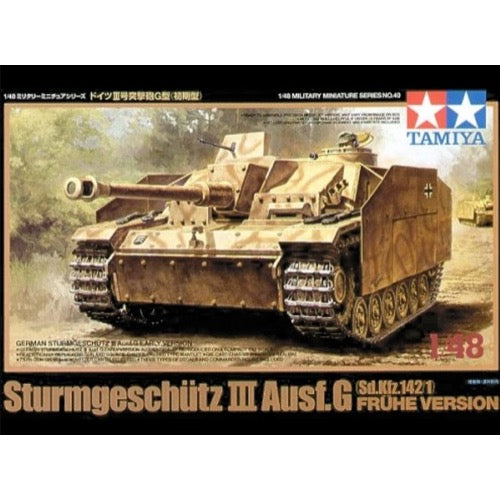
Tamiya 32540 1/48 Sturmgeschuetz III Ausf. G Early Plastic Model Kit
17.00
$
<h3>Unique Welded Gun Mantle</h3><p>Of the many assault guns utilized by the Germans in WWII, the most numerous was the Sturmgeschütz III. Based on the durable Pz.Kpfw. III chassis with a completely new superstructure, the revolving turret was eliminated and the short barreled 75mm L/24 gun was mounted directly onto the hull, giving the StuG III an extremely low vehicle profile. Originally intended for close infantry fire support, it was used as self-propelled artillery against enemy strong points. However, when the German forces encountered the Russian KV-I and T-34 tanks on the Eastern front, the situation abruptly changed. To cope with this Russian tank threat, the Germans were forced to upgrade their existing weapons systems. The resulting StuG III Ausf.G, built from late 1942 onwards, used a more powerful, long barreled 75mm L/48 gun.</p><h3>Features</h3><ul>
<li>Assembly model of the Sturmgeschutz III Ausf.G Early Version in a compact 1/48 scale.</li>
<li>Length: 140mm, Realistically replicated gun and square-shaped welded type mantlet.</li>
<li>Early version distinguishing features such as front bolt-on armor and smoke dischargers faithfully replicated.</li>
<li>Die-cast chassis for added weight and realism.</li>
<li>Assembly type treads feature one-piece straight sections with realistic sag effect.</li>
<li>Kit allows choice of either 75mm L/48 gun or 105mm howitzer.</li>
<li>Kit includes 1 commander figure (torso) and 2 types of markings.</li>
</ul>
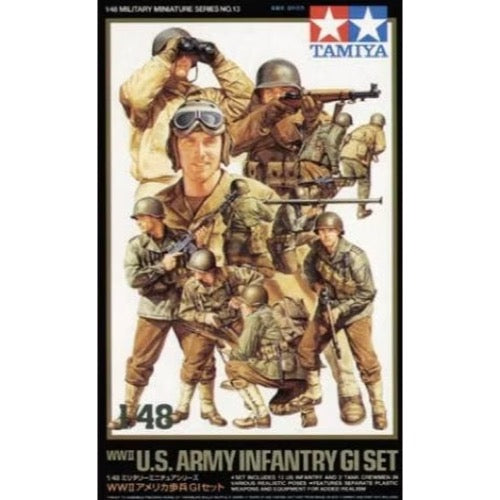
Tamiya 32513 1/48 US Infantry GI Set Plastic Model Kit
7.00
$
<h3>Looking For A Few Good Men?</h3><p>Tamiya introduces a set of 15 high quality plastic assembly 1/48 scale figures. Models depict 13 WWII U.S. infantry GIs in charging and firing poses as well as 2 tank crewmen to use as accessories for AFV models. Set includes separate plastic weapons and equipment for added realism.</p><h3>The U.S. Infantry in WWII</h3><p>The U.S. army's WWII military campaign was based around its company units. At the core of these units were squads consisting of no more than twelve soldiers. Each squad included a Sergeant ranked squad leader, a Corporal ranked assistant squad leader, a machine gunner and riflemen. The most recognizable uniform worn by U.S. troops during WWII was the M1941 field jacket, based on a civilian jacket design, and the M1943 field jacket (modified version of the M1941). Featuring four large pockets, the M1943 was developed in order to standardize military uniform and was supplied to soldiers from late 1943. However, due to production delays, the M1941 continued to be used widely by many troops. Troops in winter made use of overcoats and mackinaw coats derived from civilian items, as well as mufflers, gloves and the like. Crews of U.S. armored vehicles preferred to wear the warm and functional "tanker's jacket."</p><h3>Includes</h3><ul>
<li>Noncommissioned Officer x 2</li>
<li>Rifleman x 5</li>
<li>BAR man x 2</li>
<li>Machine gunner x 1</li>
<li>Bazooka gunner x 1</li>
<li>Loader x 2</li>
<li>Tank crewman x 2</li>
<li>Separate sprue for weapons and equipment</li>
</ul>
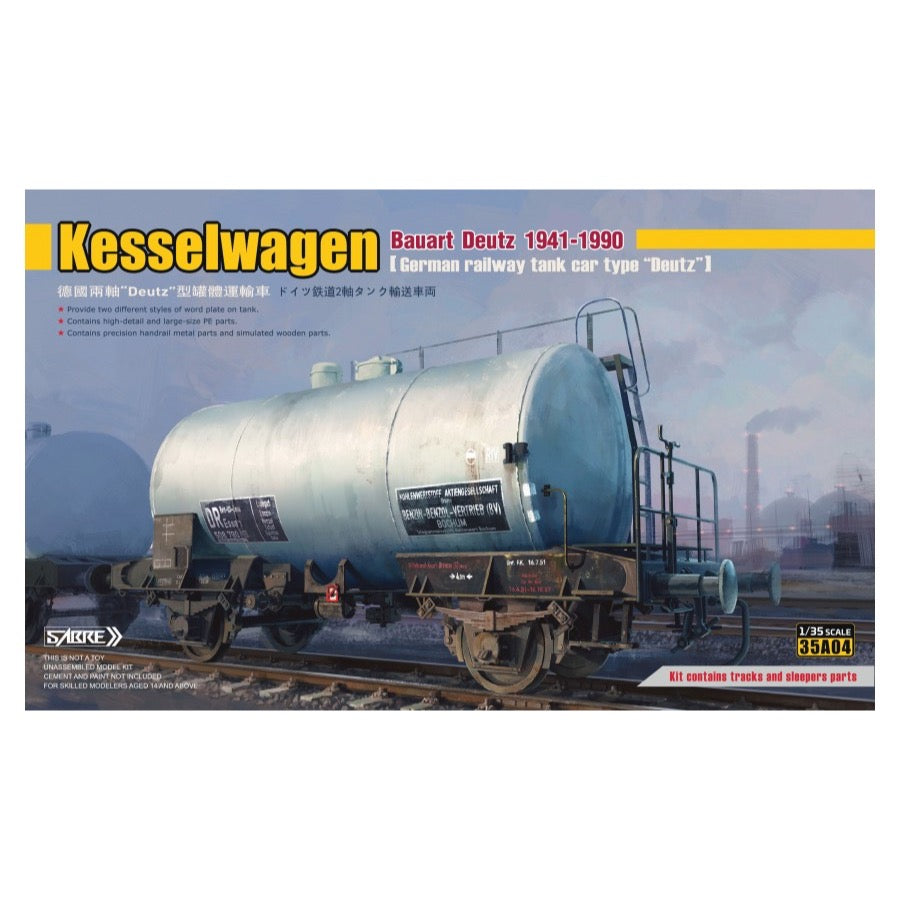
Sabre Model 35A04 1/35 Kesselwagen Bauart Deutz 1941-1990
44.00
$
<p>This model kit from Sabre Model contains parts to build a pair of two-axle tank freight cars, used by Germany between 1941 and 1990! Photo-etched parts and precision metal parts are included, as are metal wheels and simulated wooden deck parts; the tank access covers can be built opened or closed. </p>


